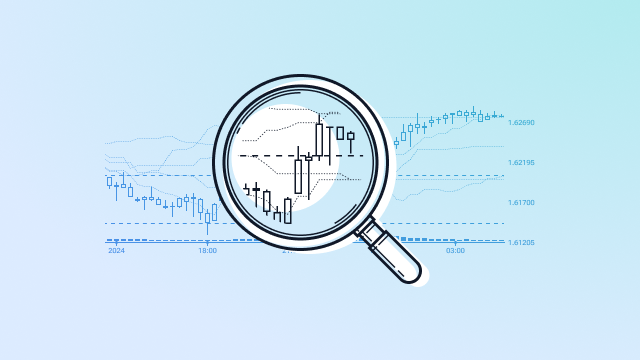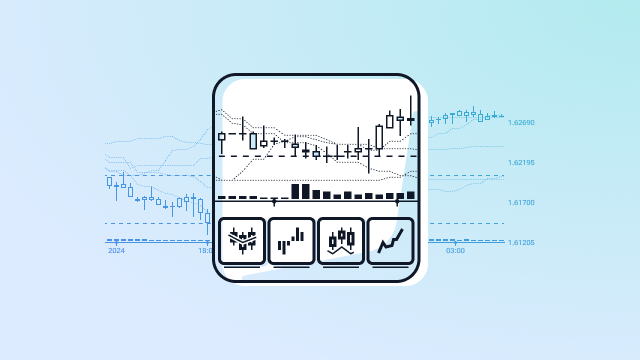In this article, we venture into the synergy between two prominent indicators, the Ichimoku and the Relative Strength Index (RSI), and explore their combined might in forex trading.
The dynamic world of forex trading constantly demands strategies that are both innovative and time-tested. The essence of any good trading strategy lies in its ability to predict market movements accurately and consistently. Backtesting plays a crucial role in validating a strategy’s reliability.
Sign up for the waitlist and get access to our new product for online backtesting right in your browser.
Ichimoku and the Relative Strength Index (RSI): Methodology
Data Selection
- Symbol: GBP/JPY
- Testing Period: From the dawn of 2021 to June of the same year, we assessed a 5-month period.
- Timeframe: Trades and analyses were conducted on a 4-hour chart, balancing both precision and overarching trend insights.
Strategy Description
The Ichimoku, an indicator often used to gauge momentum and future areas of support and resistance, is complemented by the RSI’s capability to identify overbought or oversold conditions. Trades are primarily initiated based on Ichimoku signals, refined and confirmed using RSI readings.
Entry conditions:
- Price crossing the Ichimoku Cloud (Kumo)
- RSI crossing above 30 (for buy) or below 70 (for sell)
Exit conditions:
- Price crossing the opposite side of the Ichimoku Cloud
- RSI showing signs of reversal (crossing below 70 for buys or above 30 for sells)
- Backtesting Setup
- With an initial footing of $10,000, we ensured that the maximum lot per trade did not exceed 3.00.
Ichimoku and RSI: Backtesting Results
The results offered a comprehensive insight into the strategy’s potential:
|
Total trades |
54 |
|
Profit trades |
33 |
|
Loss trades |
21 |
|
Profit trades cons |
6 |
|
Loss trades cons |
4 |
|
Trades per day |
0.36 |
|
Trades per month |
11 |
|
Profit trades per month |
7 |
|
Loss trades per month |
4 |
|
Max profit trade |
$4,642.05 |
|
Max loss trade |
$1,282.94 |
|
Initial deposit |
$10,000.00 |
|
Net profit |
$24,762.31 |
|
Gross profit |
$36,707.03 |
|
Gross loss |
$11,944.73 |
|
Profit per month |
$5,022.11 |
|
Average profitability per month |
50.22% |
|
Average profit per trade |
$1,112.33 |
|
Average loss per trade |
$568.80 |
|
Profit-to-loss ratio |
1.96 |
|
Max drawdown |
$6,105.43 |
|
Max drawdown to max balance |
17.56% |
|
Max drawdown to average balance |
27.28% |
|
Profit factor |
307.00% |
|
Return |
247.62% |
|
Mac lot per trade used |
3.00 |
|
Restoration factor |
4.06 |
|
Reliability factor |
82.00% |
|
Profit probability |
61.00% |
|
Loss probability |
39.00% |
Performance Metrics:
- Total trades materialized: 54
- Successful forays: 33; Missteps: 21
- The profit-to-loss ratio stood at a commendable 1.96, with an overall return of 247.62%.
Profits and Losses:
- The net profit touted a whopping $24,762.31, derived from a gross profit of $36,707.03 and a gross loss of $11,944.73.
- The zenith of success reached $4,642.05 in a single trade, while the deepest plunge was restricted to $1,282.94.
Monthly Analysis:
On average, 11 trades were executed monthly, leading to a profit of approximately $5,022.11 and an average monthly profitability of 50.22%.
Ichimoku and the Relative Strength Index: Analysis of Results
Strengths:
The strategy, with its 82.00% reliability factor, showcased a consistent profit probability of 61.00%. The restoration factor at 4.06 suggests the strategy’s capability to recover from drawdowns effectively.
Weaknesses:
The maximum drawdown, while substantial at $6,105.43 or 27.28% of the average balance, reminds traders of the importance of risk management and capital preservation.
Compared to other industry standards, this strategy’s performance demonstrates a remarkable potential for consistent profitability, albeit with its associated risks.
Ichimoku and RSI: Potential Improvements and Recommendations
While the synergy between Ichimoku and RSI is evident, traders might consider integrating stop-loss and take-profit levels to better manage potential losses. Additionally, periodic review and optimization based on market conditions are essential. Diversifying by testing this strategy on other currency pairs could also provide a broader safety net.
Additional comments
The strategy can be described as a combination of mean-reversion and buy-lows/sell-highs on retracements according to the recent trend direction. In simple words, when we see a strong uptrend, we buy on rebounds after the price could not break through various support levels marked by the Ichimoku indicator (Kijun-Sen, Tenkan lines and upper range of the cloud). The same approach was used during downtrends, although the vast majority of trades were buy GBP/JPY.
It’s worth stating weak points straight away. Maximum drawdown exceeded the average requirement for a low-risk trading strategy. That was reached only once when the indicator was showing uncertainty, and prices breached crucial support levels but failed to proceed with the counter-trend rebound. On the one hand, we had to switch to shorts as Ichimoku was showing some signs of a reversal. On the other hand, the general trend direction was upward, which could have been checked by simple switching to the daily timeframe to spot the setup. So, the drawdown could have been avoided.
Next, we did not follow a straightforward requirement of the same lot size for all of the testing period. We doubled the lot size at some point, and even started using 3 lots per one trade, having up to two trades opened simultaneously. To achieve better results in the profit-to-loss ratio and the percentage of profitable deals, it’s worth keeping the balance at the initial level, withdrawing profits every month, and using only one trade per time with a 1.0 lot maximum. Such an approach would lead to lower drawdowns, less time under the water and more pips gained. However, profits in dollars could have decreased as well.
We used default settings for stop-loss orders at 60 pips (four-digit quotes) and take-profit orders at 150 pips (four-digit quotes). Sometimes we used to place pending orders: buy-limit, buy-stop and sell-limit. They were placed according to Ichimoku support/resistance levels.
The good news is that the return of 247% in 5 month, and the average monthly profit of 50% compared to the initial deposit, together with the maximum drawdown of 17% (from average balance), and average loss of 5.7% (of the initial balance) cover all of the weaknesses of the trading approach. The probability of profitable trade is 61%, which is lower than required. It would be good to have at least 80% to get the best ratio. Maximum loss of 12.8% from the initial deposit is too high.
However, it occurred when the balance was doubled, so the percentage is actually lower. On the other hand, the ratio of Max Profit per trade to Max loss per trade is impressive (3:1 approximately), and again, it covers the weakness.
Conclusion
The GBP/JPY trading strategy, anchored by the Ichimoku and RSI indicators, showcases promising potential. Its strong profitability metrics, combined with an understanding of its risks, make it a worthy contender for those looking to refine their forex trading arsenal. As always, strategies should be deployed with proper risk management in mind.
What other Ichimoku strategies should every trader try?
- Ideal Ichimoku Strategy.
- TenkanSen / KijunSen Cross Strategy.
- KijunSen Cross Strategy.
- Kumo Cloud Breakout Strategy.
- Future Senkou Crossover Strategy.
1. Ideal Ichimoku Strategy
This is a “high probability” safe and conservative approach that aims to get 30-40% of the trend.
The basic bullish rules for this strategy are:
- The market is trading above the Kumo Cloud.
- Tenkan Sen is greater than the Kijun Sen.
- Chikou Span is greater than the price from 26 bars ago.
- Future Senkou A is greater than the Future Senkou B.
- Price is near the Kijun Sen and Tenkan Sen.
- Tenkan Sen, Kijun Sen, and Chikou Span are not in a thick Kumo Cloud.
The basic bearish rules for this strategy are reversed.
2. Tenkan Sen/Kijun Sen Cross Strategy
This approach is similar to an old-fashioned moving average crossover in conjunction with longer-term SMA that controls the direction of the trade.
The basic bullish rules for this strategy are:
- Price is above the Kuma Cloud.
- Tenkan Sen is crossing above the Kijun Sen.
- Chikou San is in open space, meaning that there is nothing supporting/resisting price.
- Price, Tenkan Sen, Kijun Sen, and Chikou Span should not be in the Kumo Cloud.
The basic bearish rules for this strategy are reversed.
3. Kijun Sen Cross Strategy
This approach has the lowest risk factor compared to all the others.
The basic bullish rules for this strategy are:
- The price crosses over the Kijun Sen.
- If Tenkan Sen is less than Kijun Sen then Tenkan Sen direction should be facing upward while the Kijun Sen is flat.
Another option would be:
- Tenkan Sen value is greater than the Kijun Sen.
- Chikou Span is in open space, meaning that there is nothing supporting/resisting price.
- Future Senkou B is flat or facing upward.
- Future Senkou A value is less than Future Senkou B then Future Senkou A is facing upward.
- Price, Tenkan Sen, Kijun Sen, and Chikou Span should not be in the Kumo Cloud. If they are, it should be thick cloud.
- The market is trading close to Tenkan Sen and Kijun Sen.
The basic bearish rules for this strategy are reversed.
4. Kumo Cloud Breakout Strategy
The trade is entered in as soon as price breaks out of the Kumo Cloud. The basic rules of this strategy are the same as for the Kijun Sen Cross Strategy, except, instead of the crossing over the Kijun Sen, it has to close above the Kumo Cloud.
The rest of the requirements are identical to Kijun Sen Cross Strategy.
5. Future Senkou Crossover Strategy
This is more of a time-based approach.
The place where the Senkou A crosses Senkou B signifies a possible turning point in the trend. The basic rules of this strategy are the same as for Kumo Cloud Breakout Strategy, with an additional requirement that current Senkou A must be greater than current Senkou B.
The rest of the requirements are identical to Kumo Cloud Breakout Strategy.
 Backtest Your Trading Strategy
Backtest Your Trading Strategy
 ไทย
ไทย
 Tiếng Việt
Tiếng Việt
 Polski
Polski
 Türkçe
Türkçe
 Nederlands
Nederlands
 Română
Română
 한국어
한국어


